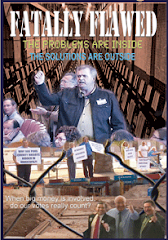 26Dems Editorial Comment:
26Dems Editorial Comment:Three Strikes: Miners, Musicians Salesgirls, and the Fighting Spirit of Labor's Last Century was first published September 3 2001.
It is fitting that on Labor Day we take a deeper look at this book published just before 9/11 that examines how workers struggled during three strikes and learn from history. The plight of workers today during the current recession, the deepest since the 30's, is the result of unrestrained capitalism that has deepened the divide between the wealthy and the rest of us.
Here is a 2001 University of California review of this book.
Most working people regard Labor Day as "just another
day off," laments labor historian Dana Frank, coauthor of a new book that tells the story of three compelling labor struggles in the
United States.
"Few people really understand how much they owe the labor movement," said Frank, a professor of American studies at the University of California, Santa Cruz. "It's like my bumper sticker says, the labor movement are the folks who brought you the weekend."
In the new book, Three Strikes: Miners, Musicians, Salesgirls, and the Fighting Spirit of Labor's Last Century (Boston, MA: Beacon Press, 2001), Frank and coauthors Howard Zinn and Robin D. G. Kelley capture the drama and grief of labor clashes that pit corporations against union organizers, chain stores against low-wage sales clerks, and new technologies against displaced workers. If any of that sounds familiar, the effect was intentional. "We chose stories that would resonate with what's going on today," said Frank.
In Three Strikes, Zinn describes the bloody Ludlow Massacre during the Colorado coal miners' strike in 1913-14; Frank writes of he successful seven-day strike by Woolworth salesclerks and waitresses in Detroit; and Kelley tells of the drive by New York City theater musicians to organize as the introduction of "talking pictures" in the 1930s threatened their jobs.
"We wanted to capture some of the struggle and tragedy--and the empowering thrill of solidarity--that underlie many of the rights we take for granted," said Frank. As efforts to organize service and clerical workers heat up and antiglobalization activists take to the streets, Frank and her coauthors hope their book illuminates some parallel experiences--both between organizing in the early 20th century and today, and between domestic and overseas working conditions.
"There's a whole generation of anti-sweatshop labor activists who don't make the connection with unions and labor activism in the United States, or with their own experiences as low-wage workers," she said.
In the 1930s, Woolworth's Five and Dime was the equivalent of Wal-Mart today, said Frank. The chain boasted 2,000 stores in five countries, the company exploited its workers and sold products made in sweatshops. "There was a whole movement in the 1930s against chain
stores," said Frank. "They were called 'the chain store evil' because they were wiping out small businesses."
The sit-in for higher wages and overtime by 100 salesclerks gained momentum, and the strikers capitalized on media coverage that dismissed them as "young girls, blonde, brunette, slim, plump, going on strike for their rights." The widespread press reports drew attention to the strikers' cause and prevented Woolworth's executives from calling for the National Guard. The strikers won all their demands, and the victory helped set in motion a number of winning
sit-down strikes at department and chain stores across the country.
Zinn, author of the bestselling A People's History of the United States, tells the grim tale of the conflict in which at least 66 people died, including women and children who were burned to death in a pit beneath the coal miners' tent colony in southern Colorado. Although Woody Guthrie wrote a wrenching song about the tragedy, it has been mostly overlooked by historians, noted Zinn.
"Yet that story has been buried, in the way that labor struggles in general have been omitted or given brief mention in most mainstream accounts of the history of the United States," writes Zinn. "It deserves to be recalled, because embedded in the events of the Colorado strike are issues still alive today: the class struggle between owners of large enterprises and their workers, the special treatment of immigrant workers, the relationship between economic power and political power, the role of the press, and the way in which the culture censors out certain historical events."
Kelley's story about the struggles of New York musicians resonates with today's tensions between musicians and consumers about downloading music, and with workers who are losing their jobs totechnology, said Frank, who remains optimistic about the future ofthe labor movement in the United States.
"Some very exciting things are happening," she said, citing recent victories in Los Angeles by janitors, bus drivers, and home health care workers, and successful strikes by Boeing engineers and UPS drivers. "We hope our book will help inspire and support this upsurge in labor activism."
Dana Frank is the author of the award-winning Buy American: The Untold Story of Economic Nationalism and Purchasing Power. She can be
reached at (831) 469-0933.
Howard Zinn is a professor emeritus of political science at Boston University. He is a social activist and the author of many books, including You Can't Be Neutral on a Moving Train.
Robin D. G. Kelley, a professor of history at New York University, is the author of Race Rebels and Yo' Mama's Disfunktional!
















